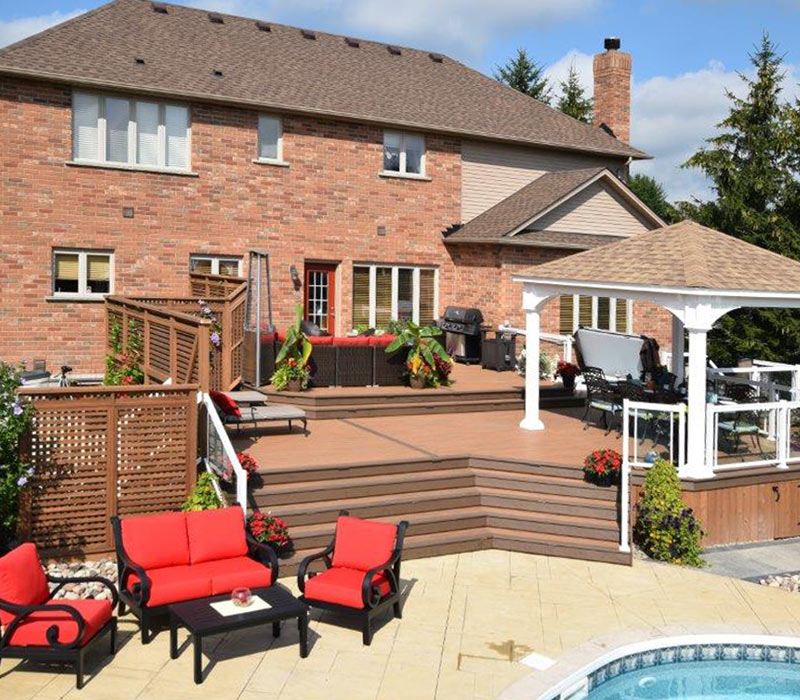
To Stain or Not to Stain
While having a backyard deck that looks like the hardwood inside your home is ideal, it’s not realistic and staining your deck can be more hassle than it’s worth.
Many decks are made from pressure treated wood, cedar or other hard woods and many different exotic woods. Deciding to stain these decks may not be your best choice. There are many misconceptions about the benefits of staining. Here are just a couple:
Staining will prolong the life of my deck.
This is not necessarily true. For most decks, the staining is not done on all six sides of each board. This will not provide a seal and, therefore, will not give your deck the protection you’re looking for. A deck that is elevated may be an exception. It’s recommended that your wood be kiln dried and pre-stained on all sides and edges before construction. This can be very time consuming and costly.
Staining a deck will lead to less work in the future.
One of the main reasons the professionals don’t recommend staining wood decks is because of the amount of time and energy involved. Stains don’t generally last more than a year. This means yearly cleaning, staining and, if necessary, sanding of your deck every year. To hire the professionals to do the job yearly can be expensive. To do it yourself can leave you with a hate/hate relationship with outdoor space.
Your professional deck builder will recommend that instead of staining your deck every year, you allow the wood to naturally gray over time. If you just can’t live with the grey and you do decide to stain your deck, do your research on products. Or better yet, opt for a low maintenance deck that provides better durability and an array of colour options.
Why You Might Choose to Stain Your Deck
Despite the maintenance considerations, deck staining offers significant benefits:
- Aesthetics: Stains enhance the natural beauty of wood, providing a rich color and finish that bare wood cannot. They can rejuvenate an aging deck or customize a new one to match your home’s exterior.
- UV Protection: Stains protect the wood from the sun’s harmful UV rays, which can cause fading, graying, and drying out, leading to cracking and splintering.
- Moisture Resistance: A good stain acts as a barrier against moisture, helping to prevent rot, mildew, and warping caused by rain, snow, and humidity.
- Easier Cleaning: Stained surfaces are generally smoother and less porous, making them easier to clean than bare wood.
Choosing the Right Deck Stain
The market offers various types of deck stains, each with distinct characteristics:
- Transparent & Semi-Transparent Stains: These allow the natural wood grain to show through while adding a hint of color and UV protection. They are best for new or well-maintained wood.
- Semi-Solid & Solid Stains: These offer more opaque coverage, obscuring some or most of the wood grain. They provide maximum UV protection and can be excellent for rejuvenating older decks or changing the deck’s color.
- Oil-Based Stains: Known for deep penetration and durability, often providing excellent water repellency.
- Water-Based Stains: Offer easier cleanup, faster drying times, and are more environmentally friendly.
Your choice should consider the type of wood, the deck’s condition, the desired look, and the level of protection needed.
Enjoy Your Deck, Smartly
While deck staining requires an investment of time and effort, doing it correctly can significantly enhance your deck’s appearance and protect it for years. If the ongoing maintenance seems daunting, remember that opting for a low-maintenance composite deck from the outset can provide a beautiful, durable outdoor space with minimal yearly fuss.
Ultimately, your goal is to spend your summer enjoying your deck, rather than constantly working on it. Understanding your options and the commitment involved allows you to make the best choice for your lifestyle and your deck’s longevity.










































